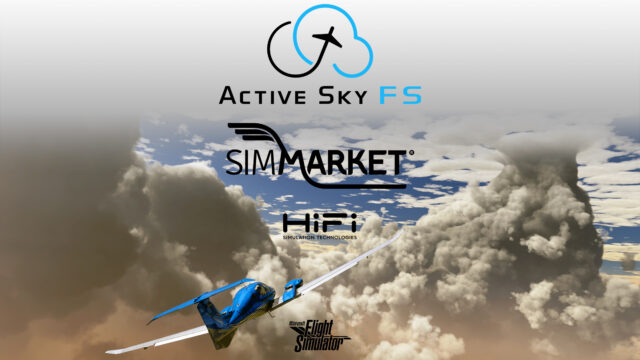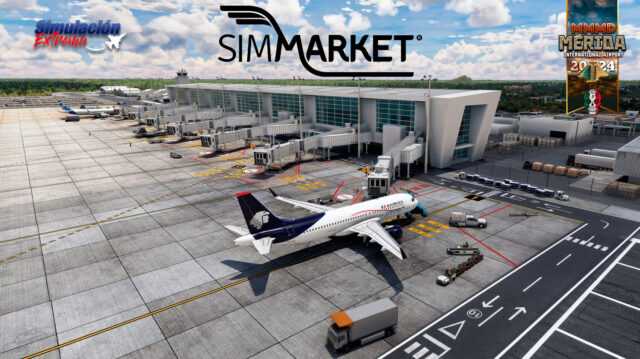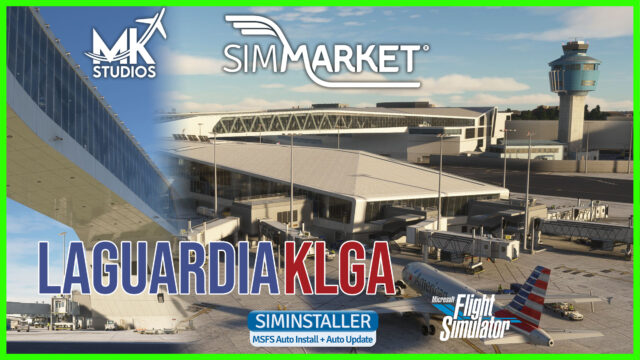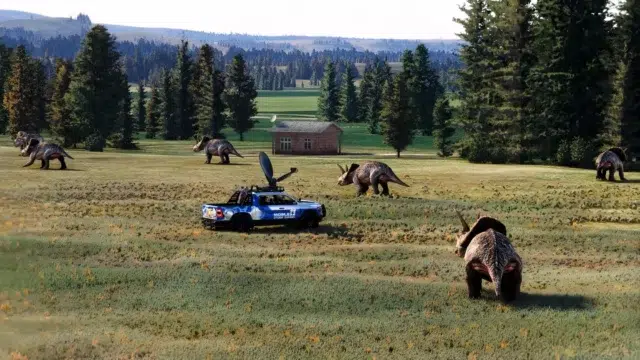While the PMDG NGX basepack only delivered the 737-800 and 737-900, the first expansion pack was released shortly after PMDG updated the NGX to SP1. This first service pack brings the 737-600 and 737-700 to FSX in PMDG quality.
Facing serious competition from the Airbus A320 family, Boeing decided to upgrade their 737 family of aircraft in the 1990’s. The first model of this new series was the 737-700, aimed at the size segment of the 737-300, while also intending to replace the DC-9. As a direct competitor to the A319, the -700 is the second most popular model in the Next Gen family after the 737-800. The 737-600 is a shortened version of the 737, similar in size to the 737-500. The -600 is the smallest aircraft in the Next Gen family, and is the only one that is not offered with blended winglets as an option. The 736 is also the slowest selling member of the NG family, with only 69 delivered and no outstanding orders.
PMDG couples these two smallest models in one expansion package, thus completing the original lineup of the Boeing 737 Next Generation family (-600, -700, -800, -900) in the PMDG lineup for FSX. The NGX 6700 expansion pack is sold at the PMDG website for $24.99.
While testing this expansion pack, I found it to be very similar to the base pack. Not really surprising, so for this review I’ll be focusing on the areas that make the expansion different from the base pack, as well as a general overview of the product. For a more detailed review on the other features, you can read my earlier review on the base pack here.
Installation:
Installation of the 6700 expansion is similar to installing the NGX base pack. After purchase, you have to download a compressed folder with the installer in it. The download file is a lot less bulky than the NGX base pack’s, coming in at 150MB. As with the base pack, you can just install the expansion pack, without having to enter serials or other credentials. You will need to have the NGX base pack installed first though. Activation is required before using the product though, so a popup window will appear the first time you run either the PMDG 737-600 or -700 in FSX. This popup window will ask for your serial, and check it over the internet. Once that’s done, and the system indicates your activation was successful, you can start using your new aircraft.
Originally, you end up with 3 new entries in your FSX aircraft selection menu: the 737-600, the 737-700 without winglets, and the -700 again with winglets. These 3 aircraft come in a PMDG house livery, but many airline liveries are available for free download on the PMDG website. There are also 3rd party repaints available on the usual portals on the internet. Installing any additional livery is very easy, as PMDG included a livery manager with the NGX base pack, that also works for the 600 and 700.
Exterior:
As you could’ve guessed, the exterior is where you’ll find the main differences between the base pack and the expansion. But these differences are only in the aircraft pictured, the quality is the same. So, I have the same things to say about the exterior here. The 3D models (3 here: -600; -700 and -700 Winglets) are gorgeous. They really are top of the class: lots and lots of detail, while also maintaining the visual quality of the overall aircraft and the larger parts. In terms of details, think vortex generators, flap and slat mechanisms, brake lines… Once again, top score for the models.
When we move on to the exterior textures. The diffuse textures themselves are very good, although they lack some wear and tear in my opinion. Especially when you zoom in, you can appreciate the detail that’s poured into those textures. However, when you don’t zoom in, and keep the entire aircraft in view, you lose all that detail, and end up with an aircraft that looks dull and ‘plastic’. The reason for this is that PMDG didn’t make full use of FSX’s texture capabilities. Sure, the diffuse textures are good (those that actually color the aircraft). But the alpha layer is used for opacity (cutting out the windows) instead of reflectivity, and the bump and spec maps aren’t as good or as detailed as they could (or even should) be. The result is that you lose most of the ‘play’ of the light on the aircraft’s surfaces. That’s the reason I find this aircraft’s textures so dull looking in exterior. Really, to appreciate the detail in the diffuse textures, you have to zoom in a lot, because it’s really not apparent from normal zoom levels. In the end, the textures are good, but they could’ve been better, I think. Also, the repaints, the work that actually gives the textures their actual airline colors, contain flaws. In general, they’re good, and you certainly get the impressing of flying an aircraft from your chosen airline. However, if you look closely, you see flaws in the placing and sizing of logos or pieces of text. It’s something I brought up in several reviews of late. It’s apparently something very few people actually get right. To be honest, it is not easy, and very time consuming, I know from experience. But that does not mean it shouldn’t be done right. Should you opt out of the 6700 (or the NGX base pack, for that matter) because of this? Certainly not!
Let’s move on to the last part of the exterior: animations. Nothing to remark on here, except that they’re so good! The only downside is the fact that you’ll be so busy flying this airplane that you won’t have the time to admire these smooth and accurate animations in flight.
 (A close-up view of the 737-600’s nose. You can clearly see the details on the model, and the see-through cabin windows.)
(A close-up view of the 737-600’s nose. You can clearly see the details on the model, and the see-through cabin windows.)
Interior:
You’ll get a new interior model with the 6700 expansion, but the changes are minor and aircraft related. What this means, is that you’ll be sitting in just about the same amazingly good looking virtual cockpit of the NGX base pack. I’m going to keep it short, but I’ll run over some of the highlights here none the less. First of all, you get a very detailed model, with almost everything modeled in 3D. What is left in 2D, is stuff that’s both inoperable on the NGX, and out of your main line of sight. Stuff that’s either operable, or in view often, is all done in 3D.
The entire virtual cockpit is covered in photoreal textures, which look very good. Unlike the quite clean exterior, the interior shows this is a used aircraft: dust and dirt, smudges and fingerprints… The virtual cockpit looks and feels like it’s used all day, every day.
To get the best out of this good looking cockpit, you just have to load it at nighttime. The night lighting in this cockpit is absolutely astonishing. It looks great when on, but even better is that its fully dimmable. So you can decide the intensity of the night lighting. I rarely fly at night in FSX, but the NGX base pack, and in extension this expansion pack, invite me to do it more often.
It’s something I already said about the base pack’s virtual cockpit, but it’s equally true here: PMDG delivered a new benchmark in realistic looking and operating VC’s. That’s the best praise I can give it, I think.
Panels and systems:
This is such an extensive section of the NGX, that I’m not going to talk much here about panels and systems. Instead, I’m going to direct you to my NGX base pack review. But I’ll talk a little nonetheless. First about the panels.
The PMDG 737 NGX comes with very good looking 2D panels. They’re also easily operated, because PMDG included ‘shortcuts’ to open or close the panels by clicking on marked spots on other panels. They look great, and work just as great, but like the base pack, the 6700 expansion comes without a 2D panel for the throttle quadrant. You get the main panel in 2D, as well as the overhead and the pedestal, but not the TQ. If you only use the 2D panels for the finer work, like me, it’s not a problem. If you intend to use the NGX exclusively with 2D panels, it is, because besides the throttles, the fuel cutoff switches, the flap lever and the speedbrake lever are located on the throttle quadrant.
To give you an idea what systems to expect without having to read any other review, I’ll just say this: expect the most detailed, most extensive and most realistic systems programming you’ve seen in FSX so far, as well as a huge load of customer options so you can configure your aircraft in FSX to your tastes, or to what it flies like in the real world.
 (note: this image obviously doesn’t show the 2D panels, but you can clearly see some different options installed compared to the other VC screenshot)
(note: this image obviously doesn’t show the 2D panels, but you can clearly see some different options installed compared to the other VC screenshot)
Sound:
The PMDG NGX 6700 comes with an extensive and very realistic soundest. Both in exterior and interior, you get very realistic sounds. Both the sounds themselves, and their intensity sounds very good to me. This product makes full use of FSX’s sound engine, so you get variable sounds in the exterior, relative to the aircraft’s position. In the interior, the ‘clicks’ you get from using buttons and switches sounds very good. And different types of switches indeed have a different sound associated with them. But what I like best, as with the base pack, is the sound you get when retracting the spinning nose wheels. As they don’t have brakes, they hit snubbers in their wheel well. This very distinct sound is something that I’ve not experienced in FSX before I got the NGX, and I absolutely love it. Even better: if you retract the gear when it’s not spinning (after a missed approach, for example) you will not get this distinct sound! Great work PMDG! I’m focusing on one feature here, of course, but you get this level of detail all over this product.
Flight Dynamics:
Now this is something where you really feel the difference between the base pack and the expansion pack. The quality is the same, I’d be very surprised if it weren’t. But what the real difference is, is that the 737-600 flies quite different than a -900. This is the largest difference you can get, comparing the smallest to the largest of the family, but it makes clear that the difference is there. You can clearly feel that the 600 and 700 are smaller and lighter aircraft than the 800 and 900. Especially when lightly loaded, they’re rockets. The difference is also very notable in approach speeds, they’re a lot lower compared to the ones you get in a 800 or 900, with the same relative load. This also results in shortened landing rolls. One thing that PMDG fixed, is the overly strong ground effect you experienced in the pre-SP1 version of the base pack. You will still feel the ground effect, but it’s not as overpowered as it was in the initial release of the NGX. Just be careful when flaring to land. The 737 doesn’t need much of a flare for a smooth landing.
Conclusion:
If you fly airliners in FSX, and you don’t already have the PMDG 737 NGX: save some money and buy it. If you already have the NGX, go save some more (just $25, this time) and buy the expansion pack. Having the 737-600 and 737-700 in addition to the 737-800 and -900 feels so natural to me, that I wouldn’t doubt about buying it. Certainly seeing that the overall quality of this product is just as good as that of the NGX base pack.
I tend to find expansion packs for FSX add-ons often overpriced for what you get. But with this 6700 expansion pack, you don’t just get 3 new exterior models: you also get an accurate VC and panels, and clearly updated flight dynamics. And that all for a very competitive price.
I highly recommend the NGX base pack, and just like that product, I’ll recommend the 6700 expansion just as much. The expansion pack is not absolutely necessary to get an accurate 737NG experience in FSX, but having those 2 smaller models in your inventory certainly opens up new possibilities.
Like:
- Great exterior models
- Gorgeous interior visuals
- Very detailed systems
- The price is not too high
Don’t like:
- I still think PMDG could’ve done more with the exterior textures
- No 2D throttle quadrant, while all other 2D panels are there
Links:














![[Video🎬] New Trailer 4K for Turkish Airports MSFS by SceneryTR Design – Istanbul – Ankara Trabzon by SIMMARKET](https://www.simflight.com/wp-content/uploads/2024/04/SceneryTR_thumb.jpg)
0 Responses
For me, seeing and looking at B737 every day, this is just fantastic. As far I know, the only product who take advantage of 64 bit operating system. Nice…..